Climate Action: Carving Our Path Forward
Burton has been one of snowboarding’s most vocal and enduring pioneers. As the worsening effects of the climate crisis continue showing up in unexpected ways, and calls to action grow louder, we recognize the status quo is no longer acceptable. It’s time for our industry to evolve.
To transform our ideals into action, we have to rebel against “business as usual” for the benefit of the planet and its people.
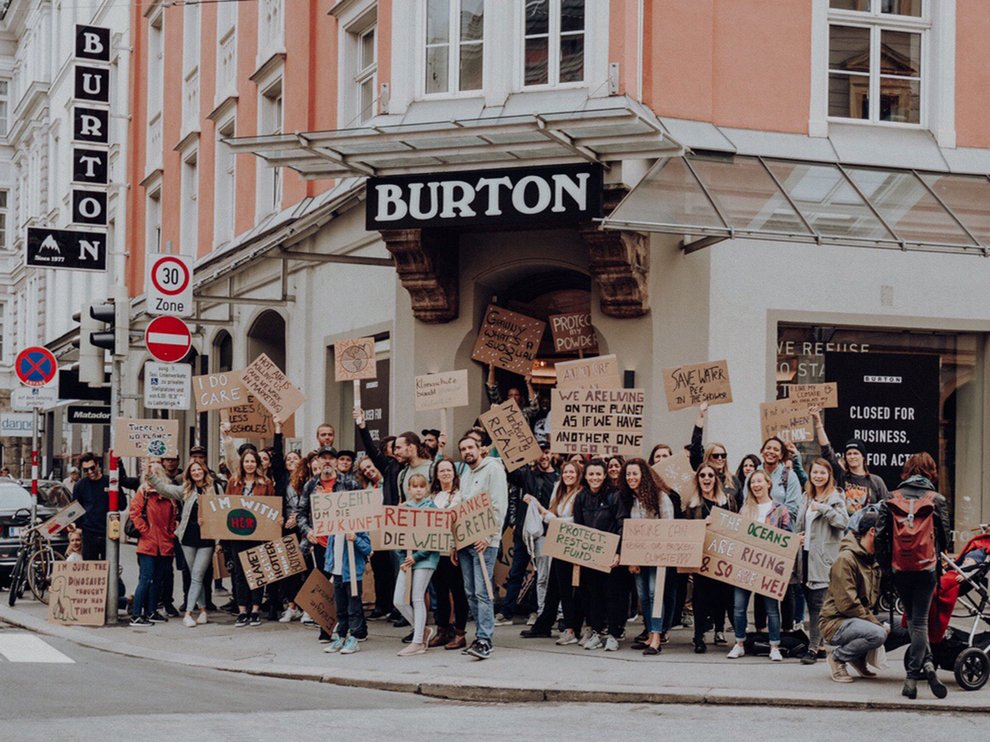
Our ambitious climate action goals outline Burton’s transparent approach to decarbonization. This means imagining new and better ways to design and produce Burton products and acting as climate stewards inside and outside the office. Better yet, influencing system-level change through the power of coalitions and industry partnerships can lead to even better outcomes than going it alone.
While measuring and disclosing emissions in shareholder reports has recently become a requirement for publicly traded companies, Burton is a privately owned business. We engage in this work voluntarily and proactively because climate action is one of our core values.
While carving this new path forward will not be easy, we’re committed to putting in the work. Here’s how we’re currently tackling climate action at Burton:
Pillar #1: Measure

When you envision emissions reductions, what comes to mind? You might think of solar panels, wind turbines, and recycling—and you’d be right. There’s another essential practice you might not have considered: measurement (and plenty of spreadsheet action).
We have to get a complete picture of our company’s emissions if we plan to reduce them. And those emissions figures come from hundreds of locations around the globe, some within our direct control, and many more from third parties and partners who play a role in our supply chain. Collecting quality data is a major hurdle to this work. We partner with suppliers to source as much primary, site-specific data as possible. Then, when needed, we fill in the gaps with credible estimates from standards leaders.
Burton uses the Greenhouse Gas (GHG) Protocol Corporate Accounting and Reporting Standard to measure seven greenhouse gasses covered by the Kyoto Protocol across all of our operations and supply chain. We also use the Higg Index Facility Environmental Module to collect emissions, water, chemical, and energy use data from supplier manufacturing facilities. And we work with GHG measurement experts to review our methodology and results.
What have these efforts shown us so far? Over 90% of our emissions come from our global supply chain and materials manufacturing (known as scope 3 emissions—more on this later). This covers nearly everything involved in the making and shipping of Burton gear. While we’re proud to source 100% renewable energy for our North American offices and stores - through purchasing Green-e® certified renewable energy credits - our investments have to focus on the supply chain to move the needle.
Sustainability experts will be the first to say it: supply chain carbon reduction is notoriously difficult to tackle. The good news is, we’re not afraid of a challenge.
Pillar #2: Set Targets
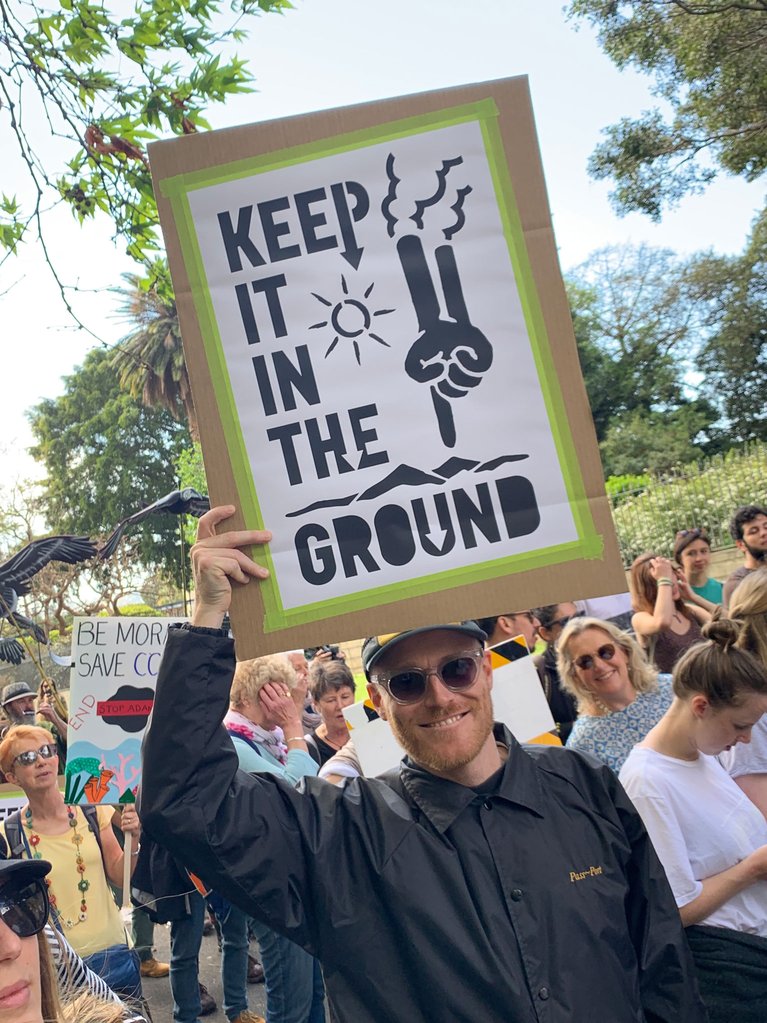
With a better understanding of our company’s emissions, where they’re coming from, and where we can reduce them, target setting is the logical next step. Declaring a quantity or percentage of GHG reductions is an expectation of businesses engaging in climate action.
Burton developed our carbon reduction targets in alignment with the SBTi (Science-Based Target Initiative) and the Paris Agreement:
- 42% reduction in absolute emissions from Burton facilities and operations (Scope 1 & 2) by 2030. (in progress)
- 55% reduction in overall supply chain emissions (Scope 3) per unit of value added by 2030. (in progress)
- 100% renewable energy sourced for Burton offices & flagship stores in the United States (Scope 2). (Done! We purchase renewable energy credits annually)
Want to learn more about scope 1, 2, and 3 emissions? Check out these resources from the EPA, GHG Protocol, and SBTi.
By choosing to align with SBTi, we’re pledging ourselves to ambitious goals based on the latest scientific consensus. The planned changes start with day-to-day operations and reach through our entire global supply chain. We don’t expect them to be easy.
Pillar #3: Reduce Emissions
From product design and materials swaps, to solar hookups and energy audits, our direct emissions reduction work is varied, challenging, and incredibly rewarding. The intersection of making the best products and reducing our carbon footprint is exactly where we want to be.
Targeting Burton’s Supply Chain
Achieving our targets means exerting influence on a highly complex global supply chain. We are considering many strategies and levers to pull. Sometimes, we must take a risk and attempt something untested before we know with certainty that it will lead to carbon reduction.
Our supply partnerships are crucial to decarbonizing our business practices on the broadest possible scale. Because many global manufacturers operate on highly polluting sources of energy, we are investing and co-investing in our top suppliers’ facilities to help them perform energy audits, measure and set their own emissions reduction targets, enhance equipment efficiencies, and transition to on-site renewables.
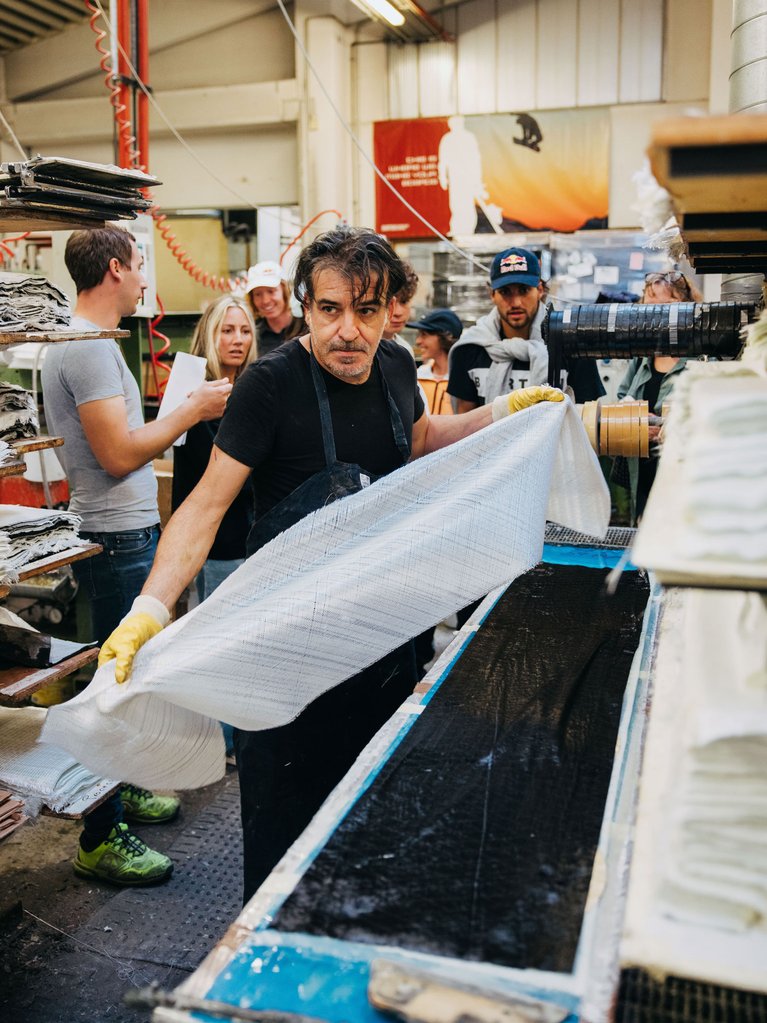
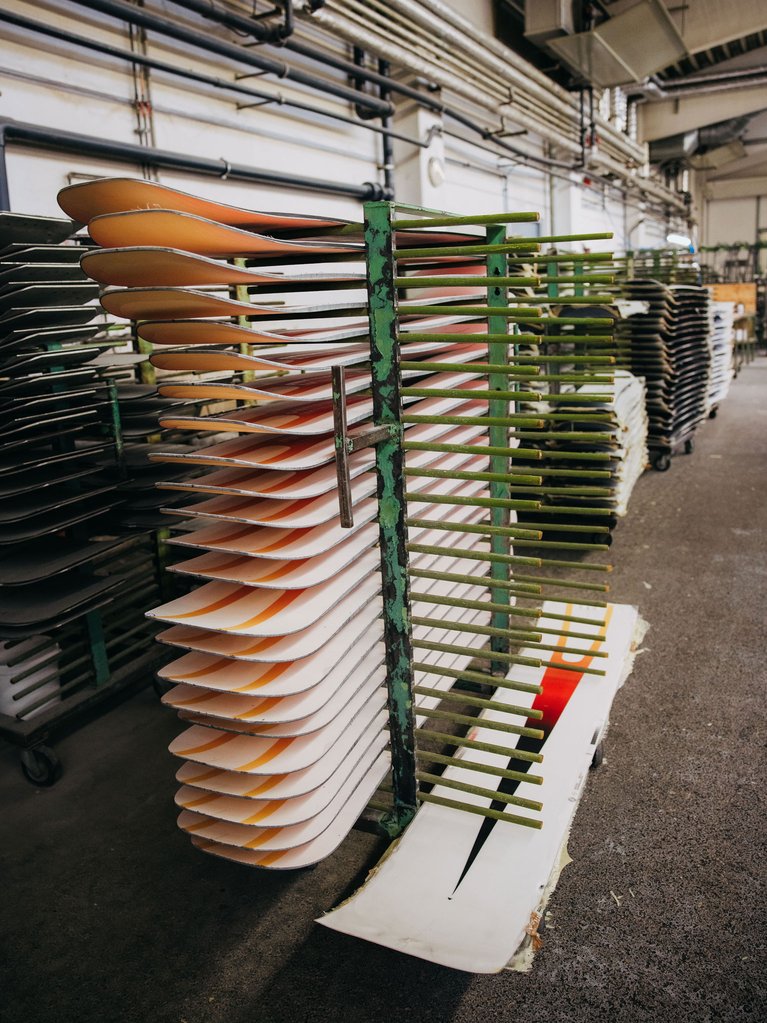
Reimagining Designs and Swapping Materials
Burton’s sustainability team is working closely with product developers on an engaging design prompt. How can we lower our carbon footprint, reduce waste, enhance durability, swap in recycled and lower-impact materials, and still deliver the most innovative, high-performing gear?
Many of our sustainable design solutions fly under the radar, but have a major impact. For example, we discovered that switching from new polyester to recycled polyester can achieve as much as a 20% reduction in GHG emissions based on industry average without compromising quality. Today, over 50% of the polyester in our line is recycled and we’re working to increase this percentage.
Some choices are highly visible (*and controversial). In 2020, we removed the lacquer from all Burton snowboards to decrease our carbon emissions and to cut the use of nasty chemicals, called volatile organic compounds. This new look was not embraced by all - not naming names, but we see you in the comments - but it is the right move while we searched for shiny coatings that don’t compromise our values.
It’s not just about materials - our product designers are striving to extend the useful life of our well-loved gear. Thoughtful tweaks to high-friction areas, such as reinforced seams on outerwear pockets, enhance durability and designing products with repair in mind, can keep the lifecycle going.
The next time you visit a Burton store, look out for our 2nd Lap bags made from factory scraps. Or if you’re ordering online, you’ll see us expand our 100% plastic-free, recyclable packaging. While it might not be the strongest lever we can pull, it’s a no-brainer swap to further reduce our dependence on fossil fuels and pollution.
It’s not one action or initiative, but the collective sum of these parts that will enable us to reach our carbon reduction goals.
Pillar #4: Advocate
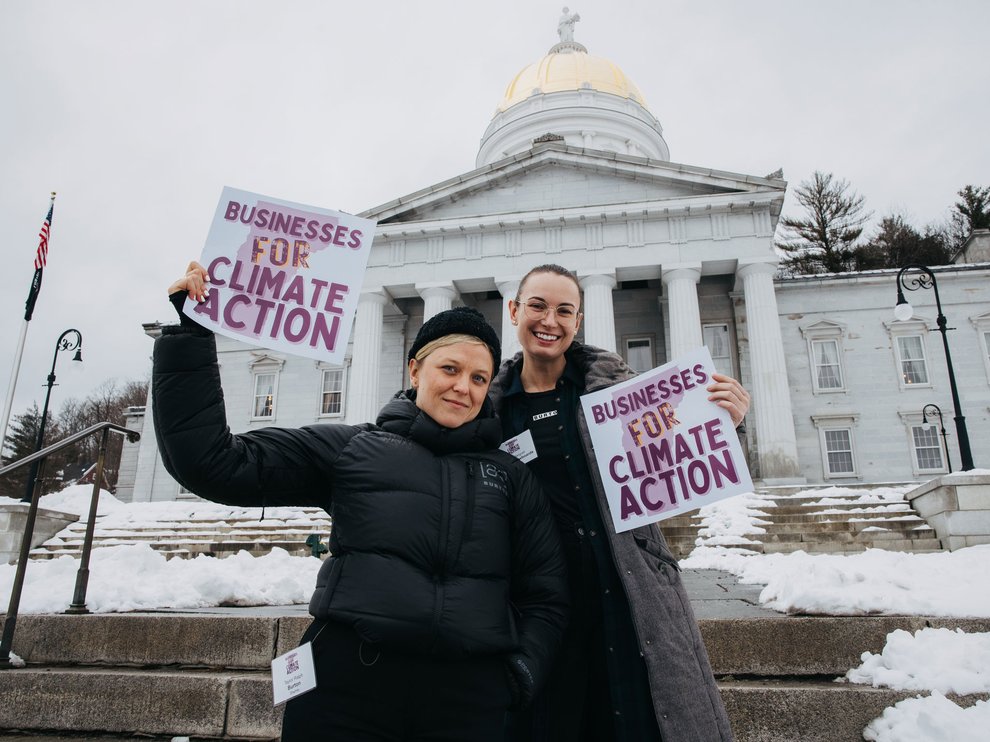
Though it’s easy to become discouraged by the scale of climate change, individual actions matter. When we as individuals recycle, bike to work, and vote with our dollar, we become part of a broader movement to break apart the status quo, piece by piece. We also know the underlying truth: decarbonization must take place on a systemic level. If we intend to reverse the climate’s current trajectory, institutional change is non-negotiable.
Burton partners with science-based organizations to endorse climate action policy on all levels of government. Our advocacy partners include Protect Our Winters, the Ceres Policy Network Business for Innovative Climate and Energy Policy (BICEP), and the Outdoor Industry Association Climate Action Corps. These coalitions are helping to build support for state and federal laws that enforce stricter GHG emissions targets for industry, transition energy grids to renewable sources, invest in clean transportation systems, and promote corporate transparency.
Pillar #5: Collaborate
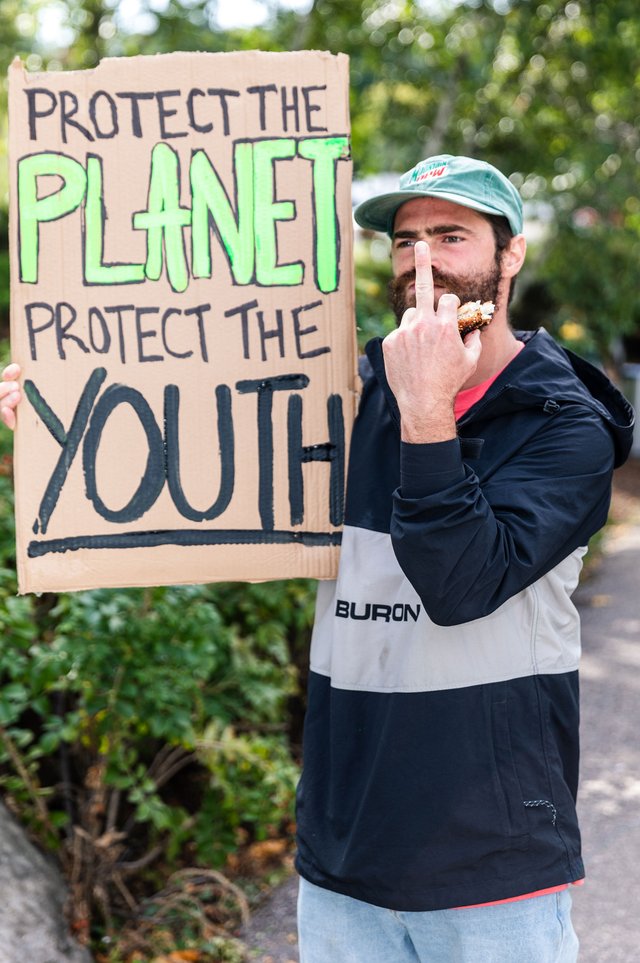

No brand is insulated from climate change. To achieve bigger picture goals, we have to collaborate on changing broad-scale industry practices. Instead of aiming our competitive spirit at one another, let’s channel that momentum into climate action, whether through co-investing in supplier energy transitions or sharing best practices on emissions reduction strategies.
We are also collaborating on climate action with other brands through the Outdoor Industry Association, the European Outdoor Group, the Winter Sports Network, Snowsports Industries America, and Cascale to share best practices and to make climate commitments in solidarity. And we are proud of our business collaborations that allow us to further divest from fossil fuels, such as Premiums for the Planet.
Climate Action: We Ride Together


Bold climate action requires a healthy tolerance for the unknown. We commit to thinking creatively, pushing audacious goals forward, and activating our suppliers, partners, customers, and other stakeholders to contribute to solutions.
While Burton was founded in small-town Vermont, our reach today extends far beyond the Green Mountains. Our team has to think and act like global citizens. But we can't do it alone.
As we carve our path forward, we hope others will follow. When fighting for the future of our people, planet, and sport, we ride together.